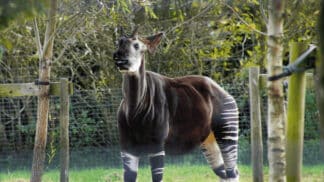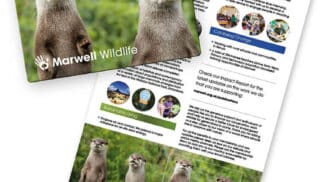Okapi
Common Name: Okapi
Scientific Name: Okapia johnstoni
An okapi’s tongue is about 35cm in length, and is long enough for them to lick their own eyelids and ears.
Okapis have oily fur which makes them waterproof!
Okapis have scent glands on each foot, which leave behind a tar-like substance to show where they have been.
Okapis weren’t discovered by western scientists until 1901.
Fast Facts
-
Status
Endangered
-
Size
Head-body length 200-210 cm; Height 180 cm
-
Weight
180-320 kg
-
Gestation
14 months
-
Young
1
-
Life span
Up to 33 years
In the wild
Okapi are known to eat the leaves of over one hundred plant species. They use their flexible, prehensile tongues to pluck leaves from branches and pull them into their mouths.
Okapis live in tropical rainforests in the Democratic Republic of Congo.
Okapis give birth to a single calf after a 14-month gestation period. An okapi calf can be on its feet and suckling within half an hour of being born. Shortly after giving birth, the mother will leave her calf in a hiding place, and only come back to it occasionally in the first two months of its life. Okapi calves double their weight in their first month!
Leopards are the main predator of okapis. The stripes on okapis’ legs and rump help to break up the outline of their body and camouflage them in the shadows of the rainforest.
The main threat facing the okapi is habitat loss, mainly due to settlement and logging. Okapis are protected under Congolese law and a significant number are found in protected areas.

